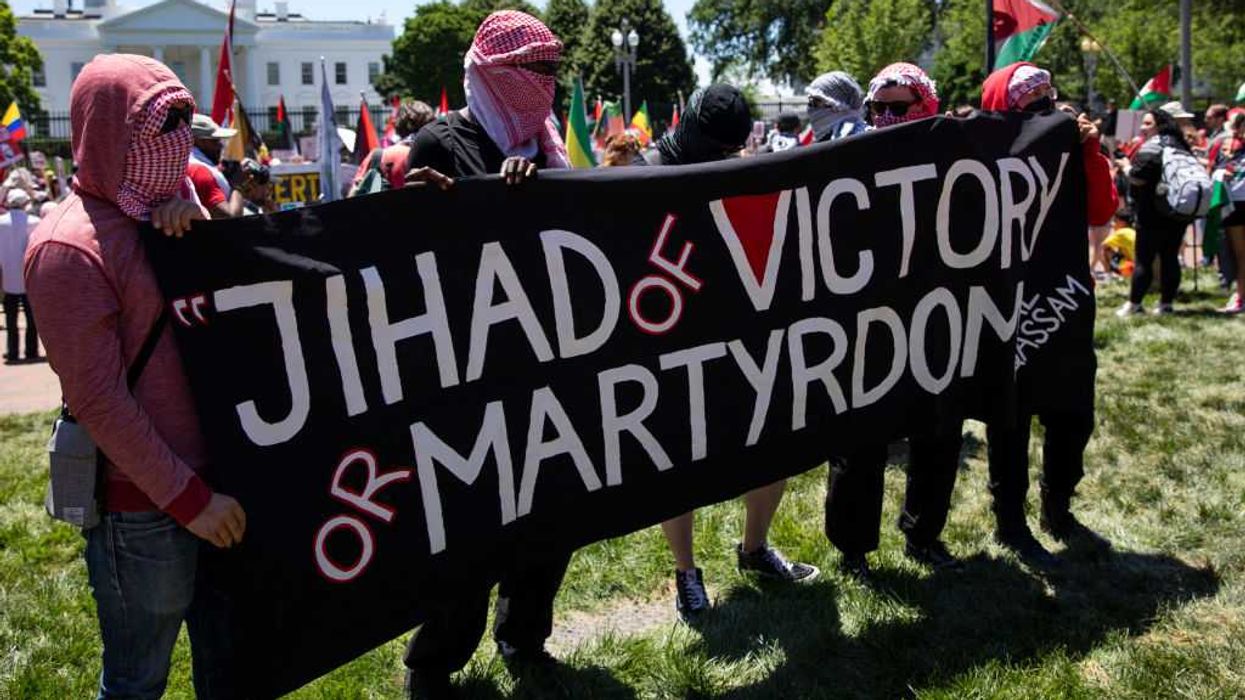World War III is trending on Twitter as Biden tours Ukraine and Poland on the one-year anniversary of the start of the Russian-Ukrainian conflict. The threat of a third world war is more imminent than at any time since the end of the Cold War, and the American people are feeling it. Glenn has long warned that Biden's foreign policy and the U.S.'s continued aid to Ukraine is "marching towards war." Now, we are at a breaking point.
Here are three reasons why a third world war is a very real possibility unless the Biden administration changes course.
1. We have become a proxy Ukrainian government.
During his speech in Kyiv, Biden announced yet another aid package to Ukraine. What will this money be used for? Biden himself admits that U.S. aid is now being used beyond military initiatives for basic government-funded programs, like pensions and "social support:"
The aid will deliver "much-needed humanitarian assistance, as well as food, water, medicine, and shelter, and other aids to Ukrainians displaced by Russia's war, and provide aid for those seeking refuge in other countries from Ukraine. It's also going to help schools and hospitals open. It's going to allow pensions and social support to be paid to the Ukrainian people, so they have something in their pocket. It also will provide critical resources to address food shortages around the globe."
Pensions? Social Support? Schools? Hospitals? Are we becoming the Ukrainian government? Monetarily speaking: yes. While our government debates our dwindling social security funds, they are sending U.S. taxpayer dollars to fund Ukrainians' pensions.
We are the proxy Ukrainian government.
Consider this. The U.K. recently released a report estimating that Russia has deployed 97 percent of its military to Ukraine with its resources depleting and its economy tanking. What if China were to not only send billions of dollars in aid packages to Russia along with tanks, missile defense systems, and short-range missiles, but moreover, to fund Kremlin pensions, Russian schools and hospitals, and various social programs? Would we not consider China an active participant in the war? Why would we expect Russia to view us any differently?
They don't.
In December 2022, Kremlin spokesman Dmitry Peskov said the expansion of Western weapon supplies to Ukraine has led to “an aggravation of the conflict.” In October, Russian ambassador in Washington called the United States' plan to send additional aid to Ukraine an "immediate threat" and cemented "Washington's status as a participant in the conflict." Glenn hit the nail on the head: "Not only are we sending over tanks, missiles, bullets, guns, we're now paying for their Social Security. I mean, we are the Ukrainian government."
2. We are sending offensive weapons to Ukraine.
If sending trillions of dollars in aid to Ukraine didn't cement our active role in the war with Russia, our escalation in offensive weapon packages certainly did. The U.S. escalated its weapons packages to Ukraine from defensive weapons to lethal offensive artillery, including Abrams tanks. Germany followed suit with sending a fleet of elite Leopard tanks to Kyiv. These are not defensive weapons—these are offensive weapons intended for use on enemy soil.
And Russia knows this.
Russia says the U.S.'s decision to send tanks to Ukraine is a "direct involvement in the conflict" and called the German government’s decision to send tanks to Ukraine “extremely dangerous” and “takes the conflict to a new level of confrontation.” Moreover, the embassy said it is convinced that Germany and its closest allies were “not interested in a diplomatic solution to the Ukrainian crisis” but were “set up for its permanent escalation and unlimited pumping of the Kyiv regime with more and more deadly weapons.”
Where will we draw the line?
Russia says the U.S.'s decision to send tanks is a "direct involvement in the conflict."
The U.K. wants to push the line even further, opening up the possibility of sending fighter jets to Ukraine as Kyiv pleads with the U.S. for F-35 stealth fighter jets. Russia warned that supplying cutting-edge fighter jets would be "on London's conscience" because of the "bloodshed, next round of escalation, and subsequent military and political ramifications for the European continent and the entire globe."
Are we willing to continue to poke the bear?
3. Russia is forging new military alliances with Western enemies.
Now that we have poked the bear, Russia is seeking new military alliances of its own, strengthening a new anti-Western alliance. Iran is building military drones for Russia's front in Ukraine. Belarus is welcoming Russian troops along its northern border with Ukraine. According to U.S. intelligence, Russia is importing illegal weapons from North Korea. Most recently, China's top diplomat Wang Yi solidified ties with Russia and is contemplating sending military aid during his recent visit to Moscow.
We have poked the bear.
Secretary of State Anthony Blinken warned against China "providing lethal support to Russia in the war against Ukraine." If we expect to continue to supply Ukraine with "lethal support" without any consequences from Russia, why would we expect China to do anything differently? As Glenn said, "after we're sending all this [aid], we actually think we have the right to tell China, 'Don't send any military aid to Russia.' Who the hell do we think we are?"
The escalation in weapons supplies on both sides of the Russian-Ukrainian conflict is pulling the world in one of two alliances, the pro-Western NATO alliance and the anti-West Russian coalition. Does this ring any bells?
Will we ever learn from history?
As Glenn recently said, "We are repeating, to the letter, World War I." What the Allied and Central powers were during the early 1900s is what NATO and Russia's anti-western coalition is becoming today. World War I was the final result of the cascade of conflicts and alliance obligations that stemmed from one single event—the assassination of Austrian Archduke Ferdinand in Sarajevo. What will be the first domino to start the cascade that pulls NATO into a war with Russia, China, Iran, and North Korea? A stray missile that hits Poland? American tanks treading into Russian territory? Is this fragile house of cards really in the best interest of the American people?
As Glenn said, we're "not saying China and Russia are the on right side." We can condemn their actions without fueling the fire that could bring the whole world into a new world war. We have to learn from our history, hold our leaders accountable, and demand that our government prioritize the interests and safety of the American people.

 JIM WATSON / Contributor | Getty Images
JIM WATSON / Contributor | Getty Images
 Joe Raedle / Staff | Getty Images
Joe Raedle / Staff | Getty Images AASHISH KIPHAYET / Contributor | Getty Images
AASHISH KIPHAYET / Contributor | Getty Images Harold M. Lambert / Contributor | Getty Images
Harold M. Lambert / Contributor | Getty Images